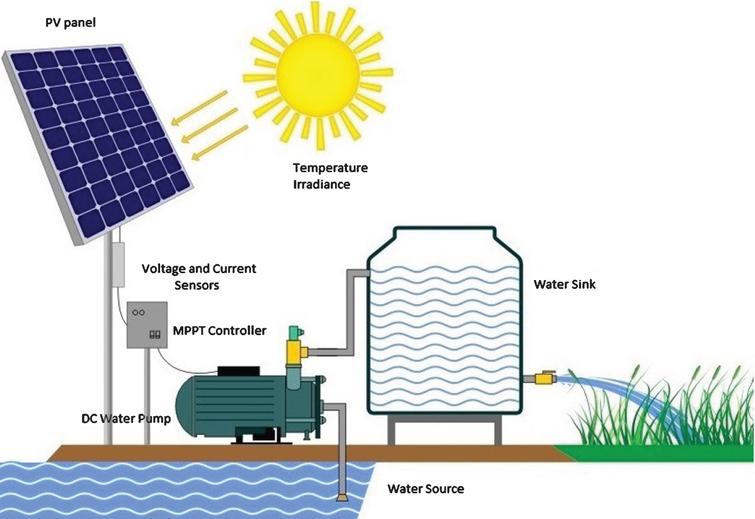A solar water pumping system is an eco-friendly and efficient way to pump water for various purposes, such as irrigation, livestock watering, or supplying water to remote locations where grid power is unavailable. This system typically consists of solar panels, a pump, a controller, and sometimes a storage tank.
1. Assess Your Water Needs:
- Determine your water requirements, including the required flow rate and the daily or seasonal water demand. This information will help you size your solar pump appropriately.
2. Site Assessment:
- Select a location for your solar panels that receives adequate sunlight throughout the day, with minimal shading.
- Identify the water source, such as a well, borehole, river, or pond, and assess the distance and elevation between the source and the location where you need the water.
3. Solar Panel Sizing:
- Calculate the total power required by the pump using the formula: Total power (Watts) = Pump power (W) / Solar panel efficiency
- Solar panel efficiency depends on your location and the angle of installation. In general, multiply the pump’s power by a factor of 1.2 to 1.5 to account for losses and variations in solar conditions.
4. Select the Pump:
- Choose a DC (direct current) solar pump suitable for your water source and flow rate requirements. These pumps are designed to work efficiently with solar panels.
- Consider factors like pump lift (head), flow rate, and the depth of the water source when selecting the pump.
5. Solar Controller:
- Install a solar controller or a Maximum Power Point Tracking (MPPT) controller to optimize the performance of the solar panels. MPPT controllers are more efficient in variable solar conditions.
6. Installation:
- Install the solar panels on a sturdy structure or ground mounts at the proper angle and orientation for maximum sunlight exposure.
- Connect the solar panels to the controller and the controller to the pump. Ensure that all wiring is correctly connected and protected from environmental factors.
7. Water Storage (Optional):
- If required, install a water storage tank to store water for use during cloudy days or at night. The tank should be placed at a higher elevation than the pump to create pressure for distribution.
8. System Monitoring:
- Set up a monitoring system to track the performance of your solar water pumping system, including water flow rate, pump status, and solar panel efficiency.
9. Maintenance:
- Regularly inspect and clean the solar panels to ensure optimal performance.
- Check the pump and controller for any issues and perform routine maintenance as recommended by the manufacturer.
10. Application:
- Use the solar water pumping system for your intended purpose, whether it’s for irrigation, livestock, or supplying clean water to remote areas.
Solar water pumping systems offer a sustainable and reliable solution for water supply in areas with limited access to grid electricity. Proper sizing, installation, and maintenance are essential to maximize the system’s efficiency and lifespan.


